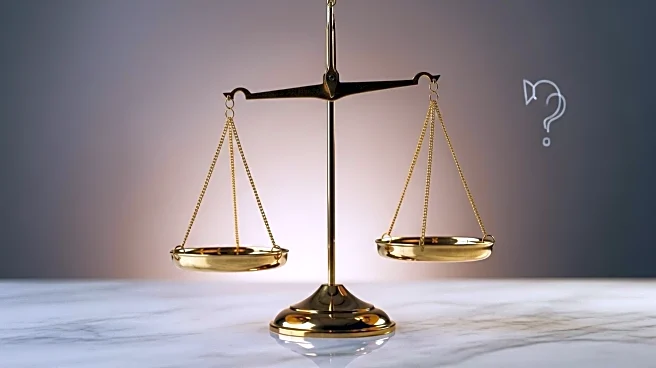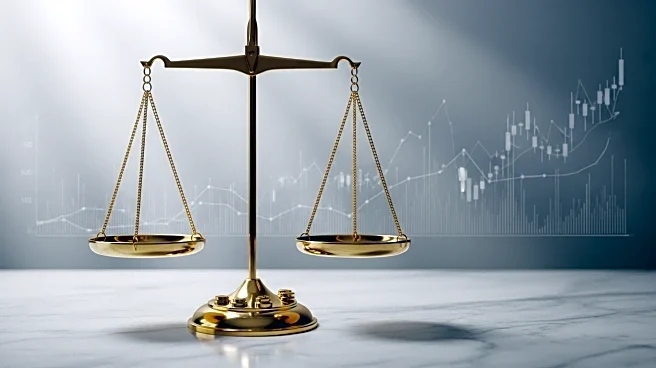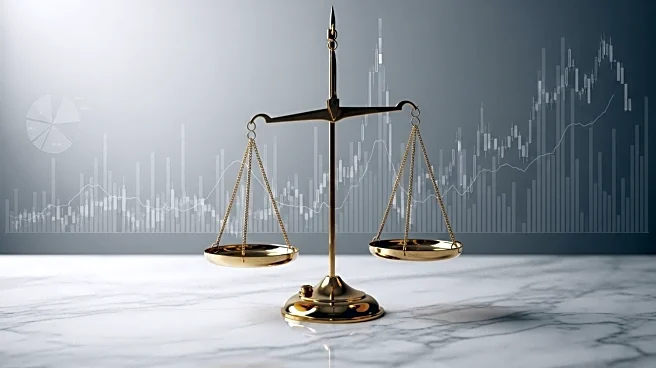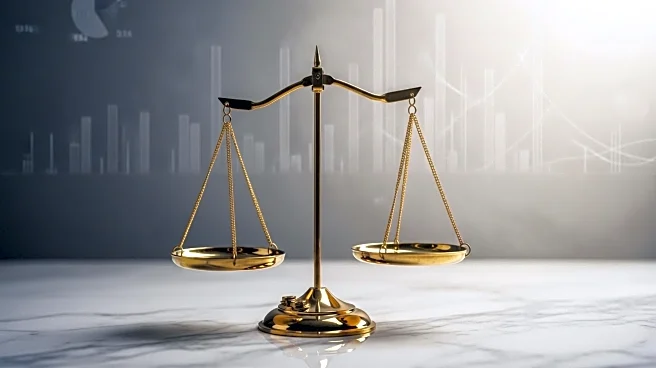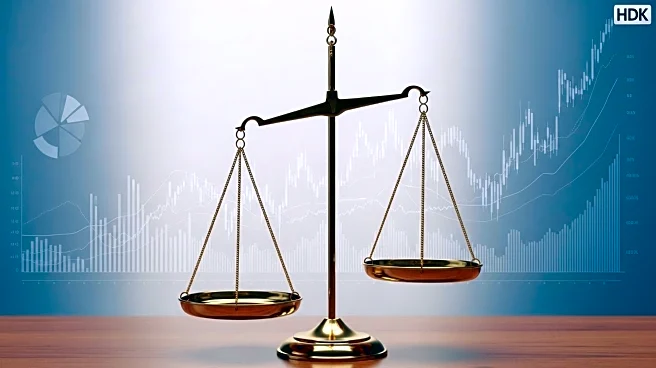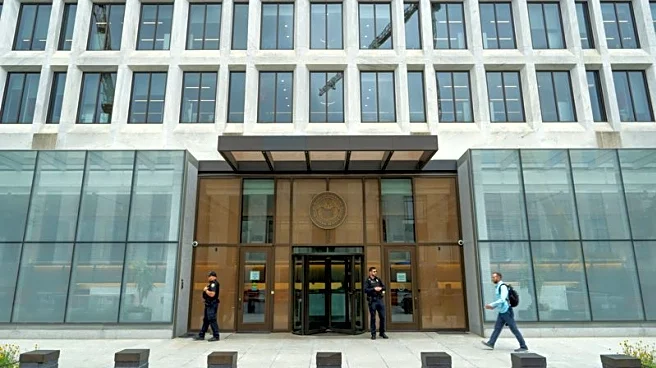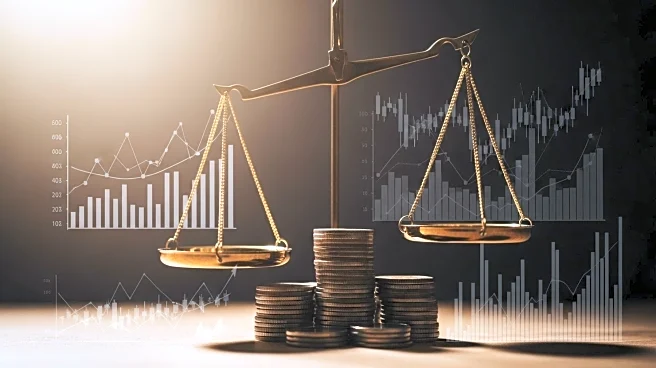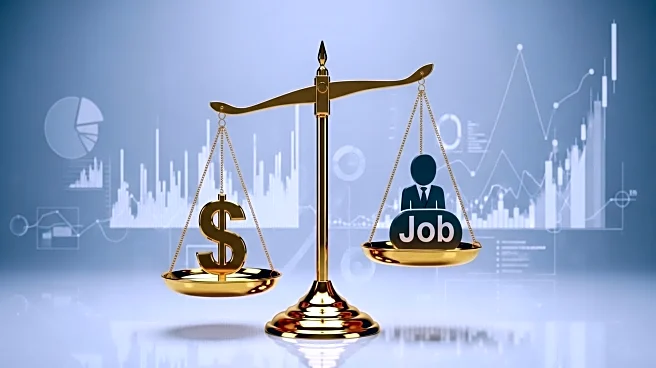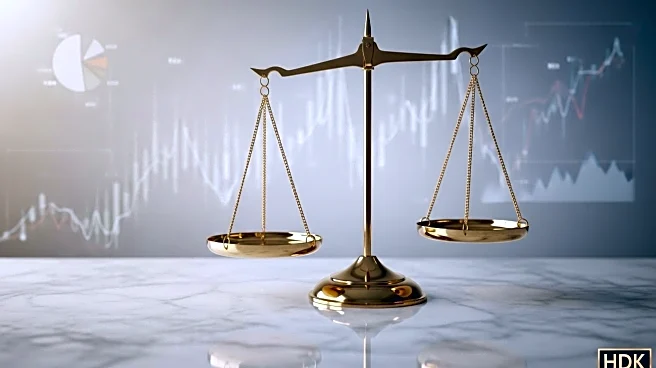What is the story about?
What's Happening?
The Federal Reserve has announced its projection for only one rate cut in 2026, a more conservative outlook than previously expected. This decision comes amidst a backdrop of economic uncertainty, including shifts in labor supply and government policy. The central bank's dot plot, which anonymously shows the expectations of 19 individual members, indicates a median estimate of 3.4% for the federal funds rate at the end of 2026. This is slightly lower than the 3.6% median estimate for the end of 2025, following two expected cuts this year. The decision reflects a cautious approach, as traders had anticipated two to three rate cuts next year. The Federal Reserve's outlook is influenced by various factors, including data measurement concerns and potential changes in leadership, with Fed Chair Jerome Powell's term expiring in May 2026.
Why It's Important?
The Federal Reserve's conservative approach to rate cuts in 2026 is significant for several reasons. It signals a cautious stance in response to economic uncertainties, which could impact financial markets and investor expectations. A single rate cut may influence borrowing costs, affecting consumer spending and business investments. The decision also highlights the central bank's focus on managing inflation and maintaining economic stability. Stakeholders such as businesses, investors, and policymakers will closely monitor these developments, as they could shape economic strategies and fiscal policies. The Fed's projections may also affect global economic outlooks, given the U.S.'s influence on international markets.
What's Next?
The Federal Reserve will hold two more policy meetings this year, in October and December, where further economic projections and decisions may be made. The upcoming expiration of Fed Chair Jerome Powell's term in May 2026 adds another layer of uncertainty, as his replacement could influence future monetary policy directions. Market participants will continue to analyze the Fed's communications and economic indicators to anticipate potential changes in interest rates and their implications for the economy.
AI Generated Content
Do you find this article useful?
